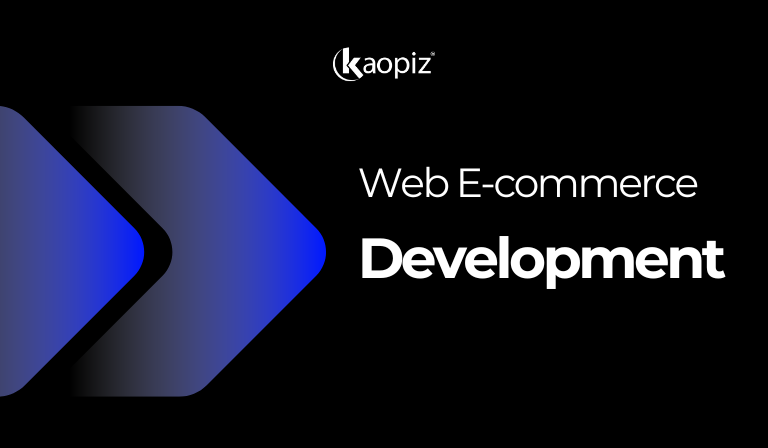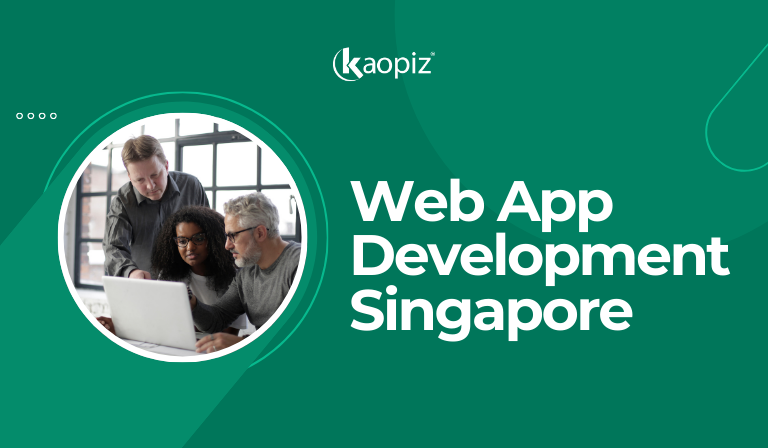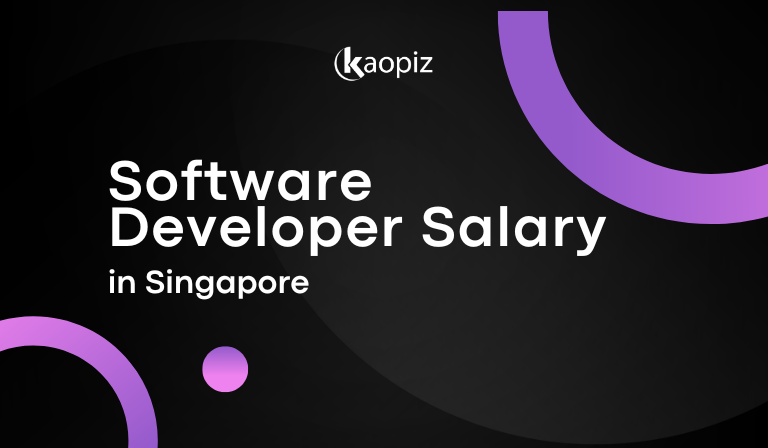Website Redesign Cost in Singapore (2025): Full Pricing Breakdown & Tips to Save
In today’s digital-first economy, your website is more than just a digital storefront — it’s the foundation of your brand, customer experience, and lead generation efforts. But if your website looks outdated, loads slowly, or fails to convert visitors, it might be time for a redesign.
One of the first questions businesses in Singapore ask is: How much does it cost to redesign a website? The short answer? It depends — on your goals, complexity, and the partner you choose. Website redesign costs in Singapore can range from SGD 2,000 for a basic refresh to over SGD 30,000 for a fully custom experience.
In this 2025 guide, we’ break down website redesign pricing in Singapore by business type, explore the key factors that impact cost, and share practical tips to help you optimize your budget without compromising on quality.
Table of Contents
- Why Website Redesign Cost Matters for Singapore Businesses in 2025?
- Website Redesign Cost Breakdown in Singapore: Price Ranges by Project Scope
- Main Factors That Affect Website Redesign Pricing in Singapore
- Website Redesign Pricing Models
- How to Estimate Your Website Redesign Budget in 2025
- Tips to Reduce Website Redesign Cost Without Sacrificing Quality
- Why Choose Kaopiz for Website Redesign Projects in Singapore
- Conclusion
- FAQs
Why Website Redesign Cost Matters for Singapore Businesses in 2025?
In 2025, having an outdated or underperforming website can significantly affect your business credibility and growth, especially in a digitally advanced market like Singapore. With consumers expecting seamless online experiences and competitors investing in high-performing digital assets, your website must keep up or risk falling behind.

- First impressions impact trust and conversion: Your website is often the first touchpoint for potential customers. An outdated or poorly designed site can reduce credibility and drive users away. A strong redesign improves brand image and increases conversion rates.
- Mobile-first and UX standards are evolving rapidly: With nearly 63% of web traffic coming from mobile, your site must be responsive and user-friendly. A redesign ensures alignment with current UX expectations and helps you stay competitive.
- Redesigns influence SEO and online visibility: Site speed, mobile responsiveness, and structure all impact your search rankings. A modern redesign supports SEO best practices and helps boost organic traffic.
- Singapore users expect seamless digital experiences: In a digitally mature market, slow or clunky websites damage your brand. A thoughtful redesign meets user expectations, especially in high-trust industries like finance, healthcare, and education.
- Cost clarity supports ROI-focused decisions: Understanding what drives redesign cost helps you focus on what matters most — performance, design, SEO, or features. A well-scoped redesign can lead to measurable business returns.
Website Redesign Cost Breakdown in Singapore: Price Ranges by Project Scope
Wondering how much does a website redesign cost? Below is a breakdown of average cost of website redesign in Singapore based on the type and complexity of the project.
| Project Scope | Description | Estimated Cost (SGD) |
|---|---|---|
| Basic Redesign | Brochure-style website (~5 pages), minimal functionality, template-based | 2,000 – 5,000 |
| SME Website Redesign | ~10–20 pages, mobile responsive, basic CMS, lead forms, SEO setup | 5,000 – 8,000 |
| Corporate Website Redesign | Custom UI/UX, CMS (e.g., WordPress/Drupal), multiple integrations | 8,000 – 15,000+ |
| Custom Applications / eCommerce Site | Complex features, booking systems, CRM/API integration, online stores | 10,000 – 30,000+ |
Basic Redesign
Estimated Cost: SGD 2,000–5,000
This includes small, brochure-style websites with up to 5 pages. Ideal for freelancers, consultants, or small businesses that only need a digital presence without advanced features.
- Template-based design
- Basic contact form
- Mobile responsiveness
SME-Level Redesign
Estimated Cost: SGD 5,000–8,000
Suitable for growing businesses that need ~10–20 pages, improved branding, and lead generation capabilities. This tier often includes:
- Custom layout design
- CMS integration (e.g., WordPress)
- Basic SEO and analytics setup
- Mobile-first design
Corporate Website Redesign
Estimated Cost: SGD 8,000–15,000+
Larger organizations require more robust functionality, advanced UI/UX, and multi-level navigation. These projects may also involve multiple stakeholders and internal teams.
- Tailored UI/UX
- CMS customization
- Integration with third-party tools
- Scalable architecture for future updates
Custom Applications / eCommerce Redesign
Estimated Cost: SGD 10,000–30,000+
These are complex redesigns for platforms with features such as online stores, booking systems, portals, or CRM/API integrations. Ideal for tech startups, SaaS products, or online retailers.
- Full-stack development
- Payment gateways, login systems
- Backend logic and database design
- Enhanced performance and scalability
Main Factors That Affect Website Redesign Pricing in Singapore
Before you set up your website redesign budget, it’s important to understand what drives the cost. In Singapore, several key factors can significantly influence how much to charge for website redesign.
Project Scope and Complexity
The scope and complexity of your website redesign play a major role in determining the final cost. A simple brochure for a site with just a few static pages is much easier (and cheaper) to redesign than a large corporate website with dozens of pages, interactive features, dynamic content, or user portals.

Key factors that increase complexity include:
- The number of unique page templates required
- Custom design and branding elements
- Advanced functionality such as e-commerce, booking systems, or API integrations
- Content migration from old systems or platforms
- Multi-language support or role-based access features
In Singapore, a basic redesign may start at SGD 2,000, while enterprise-level projects or complex platforms can cost SGD 50,000–100,000+, depending on your requirements. The more complex your scope, the more time and expertise will be required, and that translates directly into cost.
Design Requirements
Your design expectations have a direct impact on the web redesign cost. A basic layout using pre-built templates is far more affordable than a fully custom UI/UX experience crafted from scratch. If your brand requires a unique visual identity, interactive animations, or design systems aligned with global branding standards, the project will demand more design time, tools, and revisions.
Other factors that affect design cost include:
- Number of custom page layouts
- Mobile-first or responsive design approach
- Interactive elements like sliders, animations, or micro-interactions
- Accessibility and WCAG compliance
- Brand consistency and visual storytelling
Companies in Singapore often prioritize high-end, professional aesthetics to stay competitive, especially in sectors like finance, healthcare, and real estate. Investing in quality design can significantly boost user trust and engagement, but it’s important to align your design goals with your overall budget.
Functionality and Features
The more functionality your website requires, the higher the redesign cost will be. Basic websites with static content and simple navigation are relatively affordable. However, adding custom features such as contact forms, search filters, user logins, live chat, or e-commerce capabilities significantly increases the development workload.

Common features that influence the average cost for website redesign include:
- Online booking or reservation systems
- Membership or user login portals
- Product catalogs and shopping carts
- Interactive dashboards or data visualization
- API or CRM integrations (e.g., HubSpot, Salesforce)
In Singapore, businesses often need more than just an attractive layout—they need websites that work like tools. Whether it’s automating inquiries or integrating with back-end systems, each added feature means additional development hours and testing, which contributes to the overall cost.
Responsive Design
In 2023, the number of smartphone users in Singapore was estimated at 5.72 million, with projections indicating that 99.4% of the population will be using smartphones by 2026. In such a mobile-first environment, having a responsive website is not just a nice-to-have — it’s a must.
A responsive design ensures your website looks and functions seamlessly across all devices, including smartphones, tablets, and desktops. It enhances usability, improves SEO performance, and ensures you don’t lose potential customers due to a poor mobile experience.
While implementing responsive design requires additional design and testing effort, especially for custom layouts or interactive elements, it pays off through:
- Higher engagement from mobile users
- Better rankings on Google (which prioritizes mobile-friendly sites)
- Reduced bounce rates
- A more professional and accessible brand presence
For Singaporean businesses in 2025, responsive design isn’t optional—it’s foundational.
SEO and Digital Marketing
A website redesign isn’t just about how your site looks — it’s also about how well it performs in search engines and supports your marketing goals. If SEO and digital marketing are part of your strategy (and they should be), they’ll directly influence the scope and cost of your redesign project.

Key SEO-related tasks that add to redesign costs include:
- SEO-friendly URL structure and internal linking
- Optimized meta tags, headers, and alt attributes
- Redirect strategy to preserve existing SEO value
- Schema markup and technical SEO setup
- Integration with tools like Google Analytics, Tag Manager, and Search Console
In Singapore, monthly SEO and digital marketing costs typically range from SGD 2,500 to SGD 7,500, depending on the scope and competitiveness of your industry. When done right, these enhancements ensure your redesigned website not only looks great but also drives consistent traffic and leads.
Ongoing Maintenance and Support
Website redesign costs don’t end after the site goes live. Ongoing maintenance and support are essential to keep your site secure, up to date, and performing optimally. This includes regular software updates, security patches, backups, bug fixes, and occasional content updates.
Common ongoing support services include:
- CMS and plugin updates
- Server monitoring and uptime checks
- Security scans and malware protection
- Technical support and minor updates
- Monthly performance reports
The cost for maintenance typically ranges from SGD 100 to SGD 1,000+ per month, depending on your site’s complexity and the level of support you require. Partnering with a reliable vendor ensures peace of mind and reduces the risk of costly downtime or emergencies.
Website Redesign Pricing Models
Understanding how website redesign services are priced can help you choose the right engagement model for your business needs and budget. Most providers in Singapore and globally offer either fixed-price packages or hourly-based billing, with website redesign price variations depending on who you hire.
Fixed Price vs Hourly Rate
- Fixed Price: This model offers a set cost for a clearly defined scope of work. It’s ideal when project requirements are well-documented and unlikely to change. It gives you predictable budgeting but may be less flexible if you want to adjust mid-project.
- Hourly Rate: This model charges based on the actual time spent, typically ranging from SGD 30–300/hour (website design agency and freelancer) in Singapore. It’s suitable for ongoing or evolving projects where tasks may change, but the final cost can be harder to predict.
Fixed-price projects are often better for SMEs with tight budgets and clear goals, while hourly billing suits businesses needing flexibility, experimentation, or agile collaboration.
Cost Range If Working with: Freelancers, Local Agencies, and Offshore Partners
| Provider Type | Estimated Cost (SGD) | Pros | Cons |
|---|---|---|---|
| Freelancers | 2,000 – 5,000 | Lower cost, flexible, quick turnaround | Limited capacity, risk of inconsistency |
| Local Agencies | 8,000 – 30,000+ | Strong branding, full team support, local market insight | Higher cost, longer lead time |
| Offshore Partners | 3,000 – 20,000+ | Cost-effective, scalable teams, often high-quality output | Requires clear communication, time zone differences |
Singapore-based businesses often choose offshore vendors like Kaopiz to balance quality and affordability. This hybrid approach provides local account management with offshore software development, reducing costs without compromising results.
How to Estimate Your Website Redesign Budget in 2025
Setting a realistic website redesign budget in 2025 starts with understanding your business goals, technical requirements, and the scope of work. Without a clear estimate, you risk under-budgeting (leading to delays or compromises) or overpaying for unnecessary features.
Here are key steps to help you plan your budget effectively:
- Define Your Business Goals: Are you redesigning for a better user experience, improved SEO, mobile responsiveness, or to support new features (like e-commerce or booking)? Your goals will directly impact the required features and overall cost.
- Prioritize Features and User Journeys: List out essential features versus nice-to-haves. Focus on the pages or functions that directly drive conversions, such as lead forms, product pages, or client portals.
- Choose a Scalable Design Approach: If budget is limited, consider a phased approach — launch an MVP (minimum viable product) first, then expand over time with enhancements, integrations, and performance upgrades.
- Gather Multiple Quotes: Request detailed proposals from freelancers, agencies, and offshore teams to compare pricing models, timelines, and deliverables. Ensure all quotes are aligned in scope for an apples-to-apples comparison.
- Plan for Hidden Costs: Beyond design and development, including budget for SEO, content migration, licensing, CMS training, and ongoing maintenance. These often-overlooked items can add up quickly.
- Use a Budget Range, not a Fixed Number: Flexibility helps you adjust scope without derailing the project. For example, plan a budget between SGD 5,000 and 12,000 for a mid-sized business website in Singapore.
Tips to Reduce Website Redesign Cost Without Sacrificing Quality
Redesigning your website doesn’t have to break the bank. With the right strategy and smart decisions, you can control website costs in Singapore while still achieving a modern, effective, and user-friendly site.

Here are proven tips to help businesses reduce website redesign costs without compromising quality:
- Reuse Existing Content and Structure Where Possible: If your current site already has well-performing content or a logical page structure, consider keeping and repurposing it. This saves time on copywriting, content migration, and redesigning layouts from scratch.
- Opt for an Open-Source CMS Like WordPress: Proprietary platforms often come with high licensing fees and customization limits. Choosing an open-source CMS gives you flexibility and access to thousands of plugins, themes, and community support — all at a lower cost.
- Choose an Offshore Development Partner with a Strong Portfolio: Working with trusted IT outsourcing partners like Kaopiz enables you to tap into skilled design and development teams at more affordable rates. Look for partners with proven experience, transparent pricing, and positive client testimonials.
- Plan Ahead to Avoid Scope Creep: One of the biggest causes of cost overruns is unclear requirements. Create a detailed brief with goals, features, design preferences, and must-have integrations. This helps your development team stay focused and efficient.
Why Choose Kaopiz for Website Redesign Projects in Singapore
At Kaopiz, we understand that a website redesign is more than just a visual refresh — it’s a strategic move to boost your brand, performance, and business outcomes. With over 10 years of experience delivering custom web app development for startups, SMEs, and enterprises across Singapore and beyond, we’re the trusted partner businesses turn to when quality and efficiency matter.
Here’s why Kaopiz stands out:

- Proven Track Record Across Industries: We’ve successfully delivered 500+ projects in industries like finance, retail, logistics, education, and healthcare — each tailored to the unique needs of our clients.
- Offshore Cost, Local Quality: With development teams in Vietnam and a growing presence in Singapore, Kaopiz delivers high-quality solutions at competitive offshore rates — all while providing responsiveness and cultural understanding.
- Full-Service Design and Development: From UI/UX design to CMS integration, responsive layouts, SEO optimization, and ongoing support, we provide end-to-end solutions to ensure your website delivers measurable results.
- Flexible Engagement Models: Whether you need a one-time redesign, ongoing support, or a dedicated team, we adapt to your workflow and business goals. Choose from fixed-price, time-based, or team augmentation options.
- Focus on Performance and ROI: We design websites with speed, SEO, and conversions in mind — helping you not just look good online but grow your business through your digital presence.
Partnering with Kaopiz means getting a website that works as hard as you do — beautifully designed, technically sound, and built to scale.
Conclusion
A website redesign is more than just a visual update — it’s a business decision that impacts your brand, user experience, and bottom line. In Singapore’s competitive digital landscape, investing in a modern, responsive, and performance-driven website can set you apart and drive real results.
By understanding the website redesign cost breakdown, pricing models, and key factors that influence your budget, you can make informed decisions that align with your goals. Whether you’re a startup looking for a simple refreshment or an enterprise needing a full-scale redesign, careful planning and the right partner make all the difference.
FAQs
- How Long Does a Redesign Take?
- A basic redesign may take 3–5 weeks, while more advanced projects with custom features can take 8–12 weeks or longer. Clear scope and fast feedback help speed things up.
- Is It Better to Redesign or Rebuild from Scratch?
- If your current site has a solid foundation and updated tech stack, a redesign may be enough. But if it’s outdated, slow, or hard to scale, rebuilding from scratch is often more efficient in the long run.
- What Is the Best CMS Platform for Affordable Design?
- WordPress is one of the most cost-effective and flexible CMS options available. It offers thousands of themes and plugins, supports SEO, and can be easily customized for businesses of all sizes.
- Can I Keep My Old Content and SEO?
- Yes, a well-executed redesign preserves your existing content and SEO value through careful URL mapping, redirects, and on-page optimization. This ensures you don’t lose rankings or traffic during the transition.
- Can I Get a Cheap Website Design in Singapore?
- Yes, but “cheap” often comes with trade-offs in quality or scalability. A smarter approach is to work with an offshore partner like Kaopiz — combining affordable website design costs with high-quality design and local support.
Trending Post





















No Comments yet!